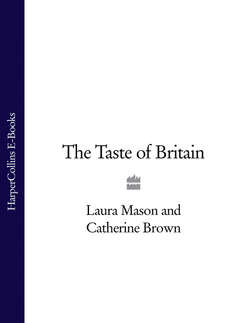Читать книгу The Taste of Britain - Hugh Fearnley-Whittingstall - Страница 227
HISTORY:
ОглавлениеWatercress, Nasturtium officinale, picked from streams and meadows, was valued for its medicinal qualities. The herbalist John Gerard (1636) and others extolled it as an anti-scorbutic. The Italian Castelvetro in 1614 wrote that it was ‘the last green salad of the season which goes on being available all winter provided the streams are not frozen. It makes quite a pleasant salad, but since there is no alternative it always seems better that it really is. Because watercress grows in fast-running water it is very refreshing and is usually eaten raw. ‘There was confusion, however, between the various sorts of cress and the nasturtium flower (now called Tropaeolum majus). John Evelyn (1699) expresses it well: ‘Cresses, Nasturtium, garden cresses; to be monthly sown: but above all the Indian [our nasturtium flower], moderately hot and aromatick, quicken the torpent spirits, and purge the brain, and are of singular effect against the scorbute [scurvy] … There is the Nasturtium Hybernicum commended also [the winter cress, Barbarea verna], and the vulgar watercress, proper in the spring, all of the same nature, tho’ of different degrees, and best for raw and cold stomachs, but nourish little.’
This ‘vulgar’ cress did not receive much notice from cookery writers, it was perhaps beneath their notice or merely formed part of a general category of saladings. The perils of eating plants that grew in near-stagnant water fouled by animal droppings must also have militated against too general an adoption. In Flanders, there was a fondness for watercress soup, and in France ‘cooks insist upon sending to table a bunch of cresses with roast fowl - even when there is salad besides’ (Dallas, 1877); but neither were British customs.
The general adoption of watercress into the diet, particularly of the urban proletariat, occurred when the hygienic cultivation of watercress began in Kent in the early nineteenth century. In essence, the cress was grown in guaranteed running water. From Kent, it spread to the Thames Valley, and thence, as the expanding rail network enabled speedy transport, to the chalk streams of Hampshire and Dorset with which it is most closely connected today. The railway to these districts was even popularly dubbed ‘the Watercress Line’. It was cried in the streets of London, where workmen bought it for breakfast and became as popular for sandwiches as cucumber (Mayhew, 1851).
